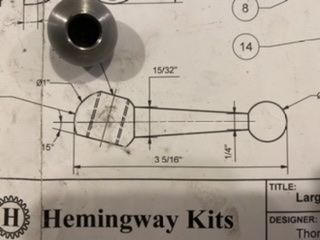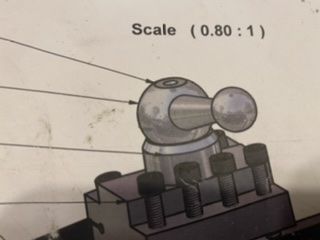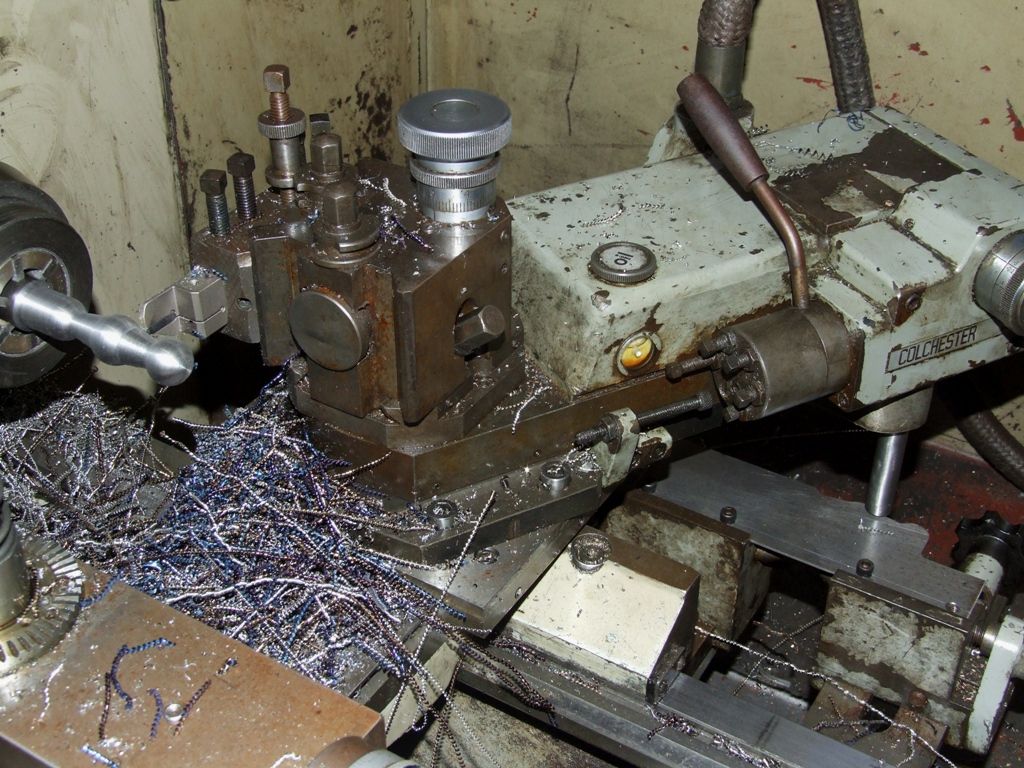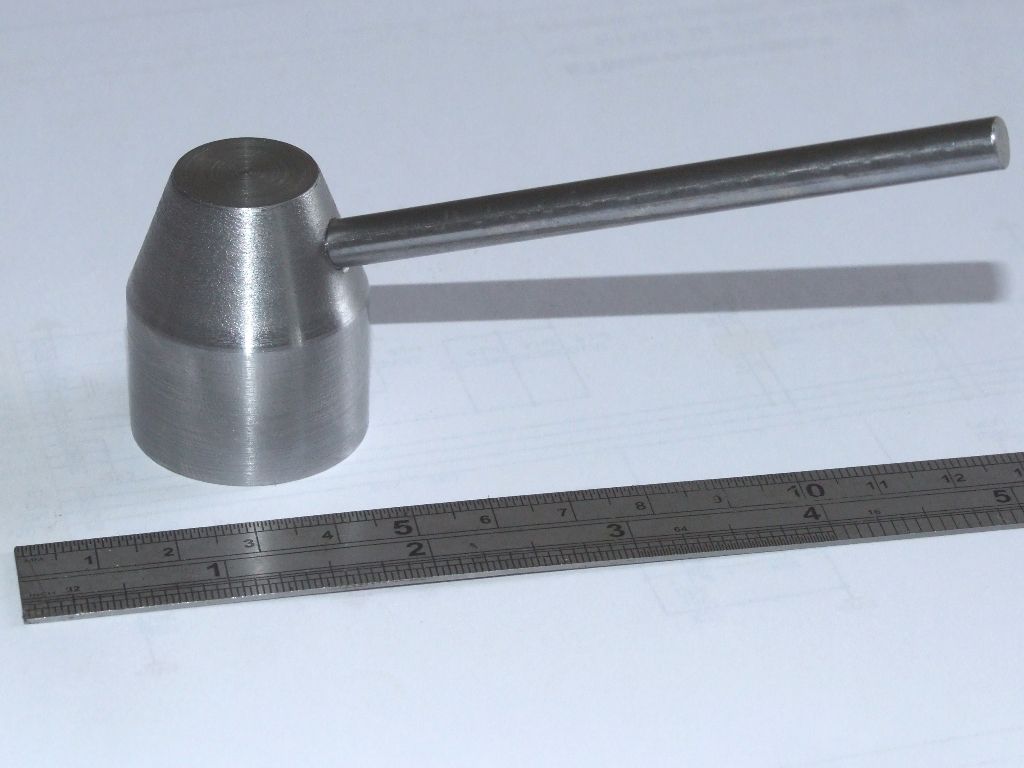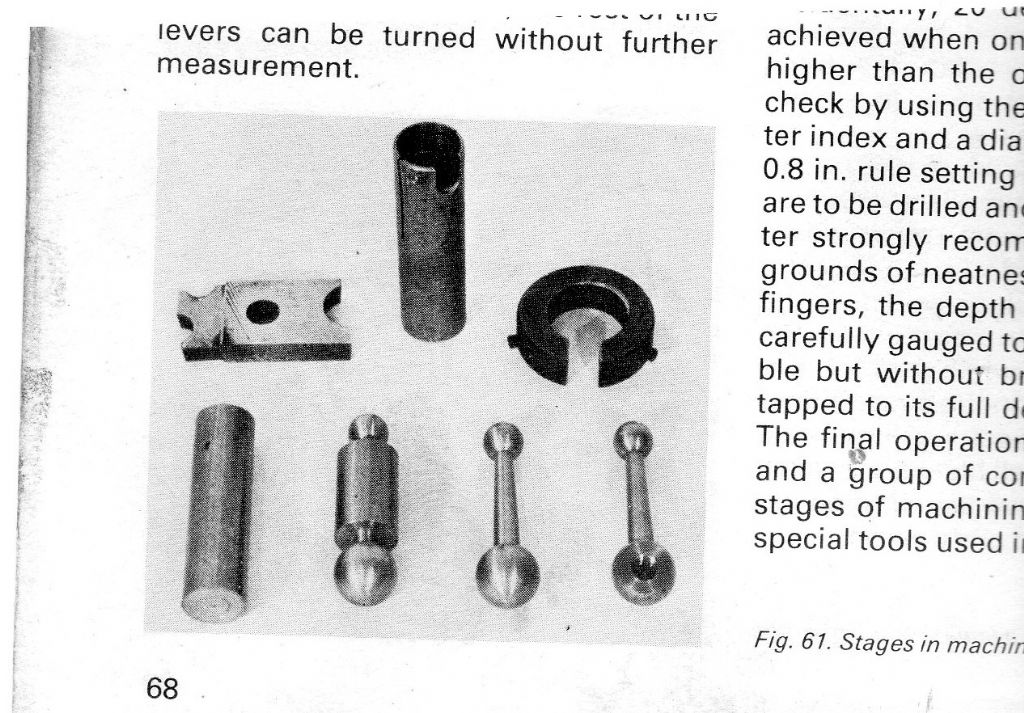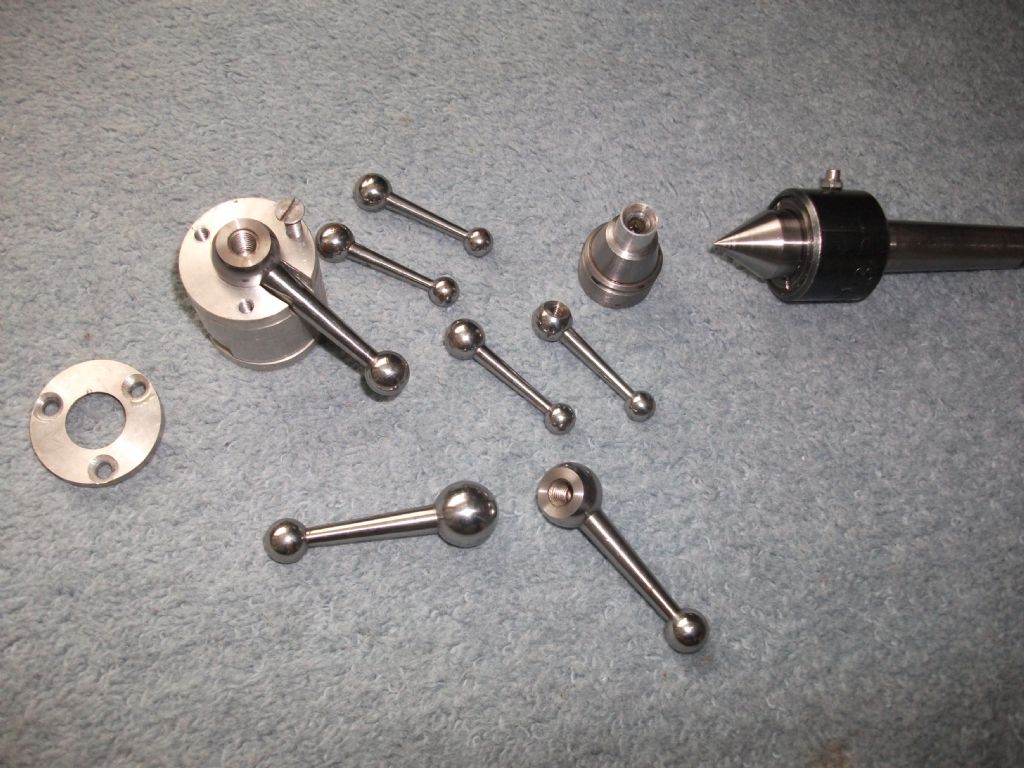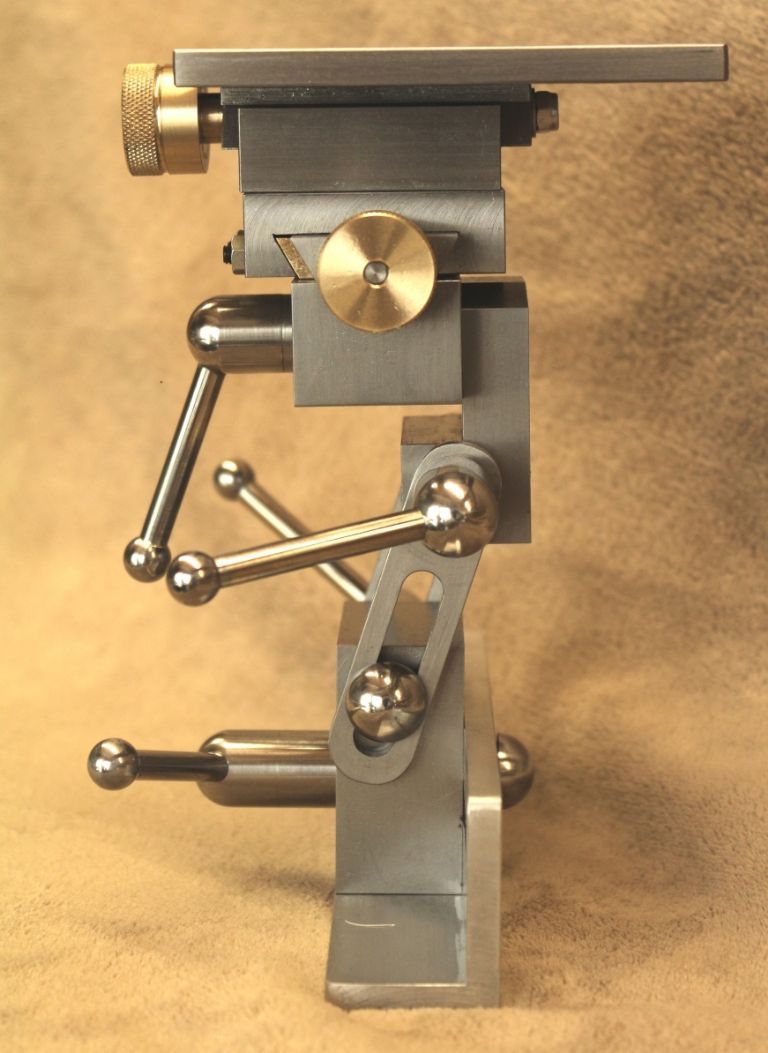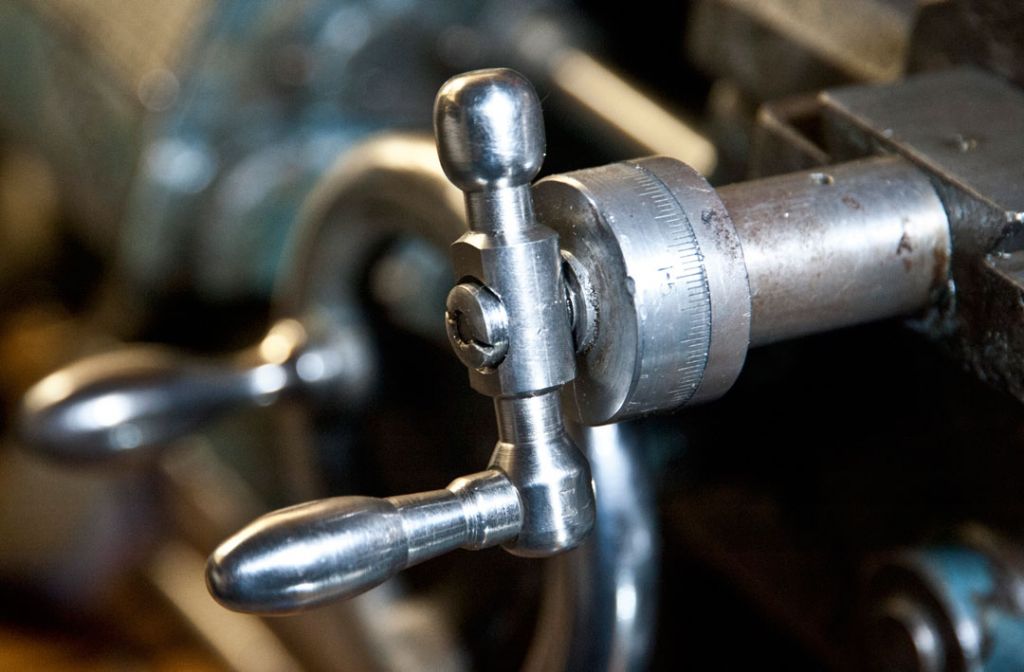I've made a number of these ball handles for various toolposts and a teeny one for the Versatile Dividing Head, simply because they look the part on my vintage Drummond and Myford lathes. The later styles as above are easier but stand out like the dog's proverbials as non-original. Besides, the ball handles are fun to make. And I have have no problems using them, not doing 8 hour shifts of production repetition work etc. .
My method needed no special split collets or the like and went, from sketchy memory, something like this:
Start with a blank the diameter of the large ball, and the length of the finished handle plus a few thou or 20 for finishing.
Turn one end of the blank down to the diameter of the small ball for about an inch or so along the length.
With a parting tool, cut a groove to the diameter of the small end of the taper section (plus a few thou for finishing) right where the edge of the small ball will be. (You can probably skip this step if you work carefully in the next step and measure as you go but I like to know where to stop the ball turning tool at.)
Use ball turning tool to create small ball until it meets the groove.
Turn the shank down to the larger diameter of the taper section along its full length to where the large ball will start. IE for a 1" diameter ball, end your cut 1" from the end of the blank, plus a few thou for finishing. You may need a female centre to steady the other end.
Flip the job around in the chuck, gripping it by the freshly turned down but still parallel shank section, and use ball turning tool to create the second, larger ball.
Holding the larger ball in the chuck (with protective shim wrapped around ball), and the small ball in a female centre, turn the taper on the shank, adjusting the topslide angle until you get the right cut from small to large ball. Use a round-nosed tool to make a nice blending radius where shank meets balls. Blend with file if necessary. Polish with emery cloth.
Hold the large ball in the chuck with the arm facing outwards. Put the ball in the very front of the jaws and angle the arm backwards so small ball sits on chuck face. Face the large ball to desired diameter, drill and tap ball. (This works best on a larger chuck for larger handles to get sufficient angle on the handle. My Drummond has a 5" three jaw that is perfect for Myford sized toolpost handles etc)
Job's good. Enjoy.
PS, I made my own female centre by removing the point from a regular revolving centre and turning up my own female tip to fit into the ball bearing in the centre body. Just used a boring bar to cut the female conical face (60 deg included angle) into a piece of 3/4" bar then turned the step, face and the spigot diameter to fit the bearing all in one setting to ensure concentricity and parted it off. You could turn the stepped spigot end first, plus a cleanup cut on the OD then flip it around in the 4 jaw and set to run true before cutting the conical face if you prefer.
Lots o' fun! And I;m sure there are many other ways to skin this same cat.
Edited By Hopper on 22/11/2020 01:41:13
DMB.


